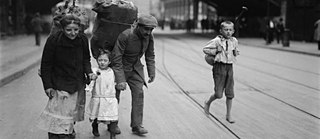Photography Exhibition
Willy Römer: Life in the City of Berlin 1919—1933

In 1903 Willy Römer began an apprenticeship at the Berliner Illustrations-Gesellschaft being the first German company to specialise in producing press photos: He was subsequently employed by various picture agencies in Berlin and Paris where he had the opportunity to learn photography from scratch. Having served as a solider from 1915 to 1918 Römer returned to Berlin in November 1918 to take over the news picture agency Photothek from one of his colleagues. Henceforth his pictures were published under his name. In 1920 Willy Römer entered into partnership with Walter Bernstein who would take care of the business matters of their shared enterprise. The Photothek Römer & Bernstein emerged as one of the leading news picture agencies in the Weimar Republic.
In large part Willy Römer’s oeuvre dates to the time between 1905 and 1935, with the years 1919 to 1929 being a major focus in his work. The photographer’s legacy and that of his news picture agency Photothek covers the history of the Weimar Republic and documents the political events from the November revolution of 1918 to the Nazi’s rise to power and the burning of the Reichstag in 1933.
Alongside press pictures charting major political events of the turbulent period, Römer’s quieter, atmospheric pictures document everyday street life in his hometown, Berlin. They show street musicians and vendors, women suffering under the hyperinflation in the Weimar Republic, children at play, waiting lines in front of labor offices, families on their Sunday outing to the park and similar genre scenes. Römer observed Berlin in a time of great upheaval not restricted to political life. Skyscraper made of glass and steel were being built adjacent to medieval looking courtyards and alleyways, archaic handcraft coexisted with industrial mass production and horse drawn carriages, electric tram and automobile were about to compete with each other. Particularly noteworthy in this regard is his passion for the skilled crafts. Römer’s ancestral roots lie in the northern outskirts of Berlin, home to traditional craftsmen. His pictures document a great number of crafts of which he knew that they were about to disappear and deliver a fascinating insight into everyday life and the work of the people in metropolitan Berlin before its destruction.
In cooperation with the Art Library of the Berlin State Museums and bpk – Bildagentur für Kunst, Kultur und Geschichte.
Details
Goethe-Institut Boston
170 Beacon Street
Boston, MA 02116
Price: Admission free
+1 617 262-6050 program2@boston.goethe.org